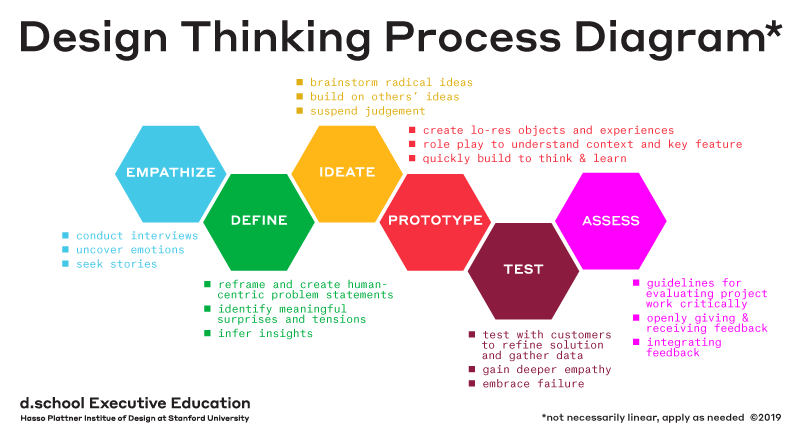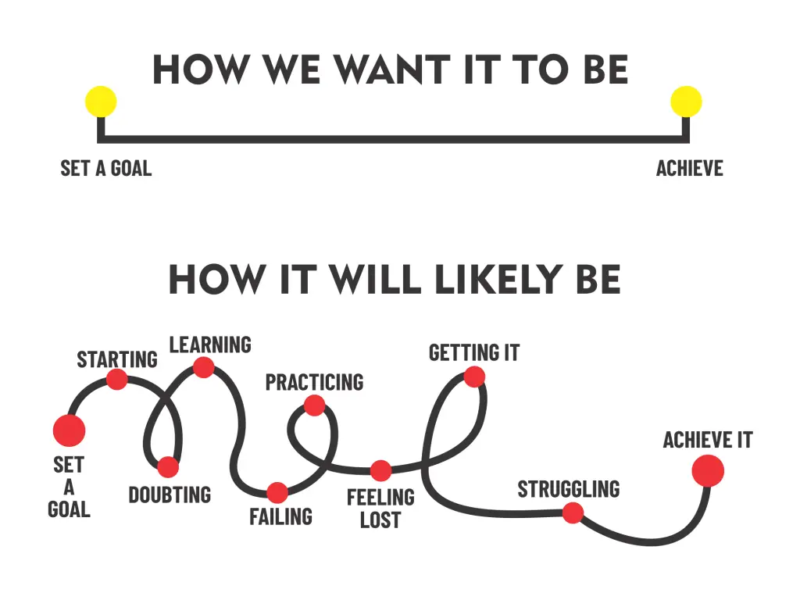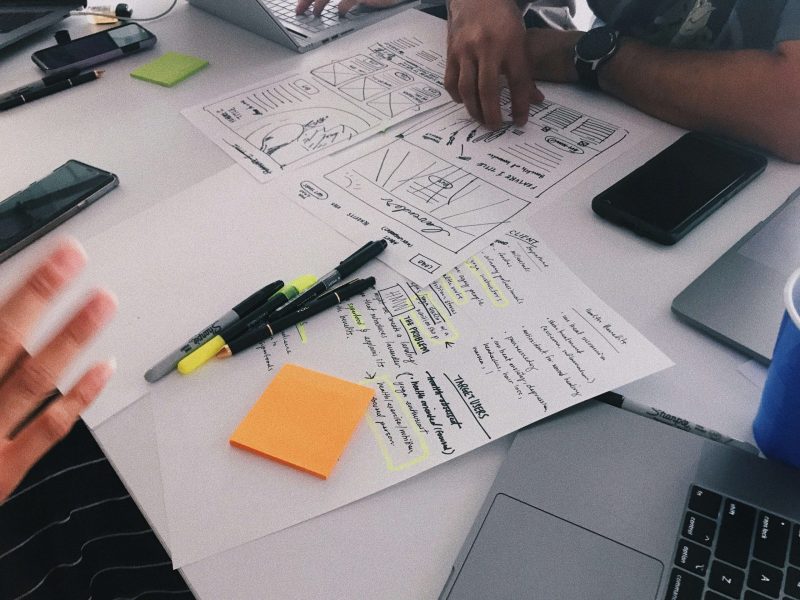The Stanford d.school Model Explained
In the evolving landscape of innovation and creativity, Design Thinking stands out as a transformative methodology for solving complex problems. Central to its global recognition is the Stanford d.school (short for “design school”), a pioneering research institute and educational hub at Stanford University.
This blog post will delve into the Stanford d.school’s model of Design Thinking, exploring its stages, principles, and unparalleled impact on creative problem-solving.
The Essence of Design Thinking at Stanford d.school
The Stanford d.school’s Design Thinking approach is built on three foundational pillars: empathy, experimentation, and iteration.
It offers a structured yet flexible framework for addressing challenges by deeply understanding users’ needs and creating solutions that are both innovative and practical.
Why is this model globally revered? Because it delivers affordable and impactful results, making it a go-to methodology for tackling even the most complex design challenges.
One of the distinguishing features of this methodology is its non-linear nature. While there are five distinct steps, the process encourages jumping between them as needed, fostering creativity and adaptability.
The Five Steps of the Stanford d.school Design Thinking Model
1. Empathize: Understanding the User
Empathy is the cornerstone of Design Thinking. This step involves immersing oneself in the user’s world to uncover their needs, desires, and pain points.
Key activities in this stage include:
- Consulting experts to gain deeper insights into the problem area.
- Observing and engaging with users to understand their experiences and motivations.
- Stepping into the user’s environment to gain a first-hand perspective of their challenges.
This stage aims to eliminate assumptions, ensuring that solutions are rooted in real user experiences.
2. Define: Framing the Problem
After gathering insights, the next step is to synthesize this information into a clear and actionable problem statement. This human-centered approach focuses on framing the challenge from the user’s perspective.
For instance, instead of framing the problem as a business requirement like:
“Increase the cereal product market share among children by 5%.”
A human-centric reframing might be:
“Children need to consume cereal food to stay healthy and disease-free.”
This subtle shift ensures that the problem-solving process remains user-focused, paving the way for innovative solutions.
3. Ideate: Generating Solutions
With a clear problem statement, the team moves into the ideation phase—a space for unrestricted creativity. This stage is about exploring a wide range of ideas without judgment.
Key techniques include:
- Brainstorming sessions to encourage out-of-the-box thinking.
- Sketching and visualizing potential solutions.
- Exploring alternative perspectives to uncover innovative approaches.
The goal is to identify new, human-centered solutions that address the defined problem.
4. Prototype: Building to Learn
Prototyping involves creating tangible representations of ideas. These scaled-down models allow teams to test concepts quickly and gather feedback early in the process.
Key aspects of this phase include:
- Developing low-cost, experimental prototypes to test feasibility.
- Sharing prototypes with team members or small user groups for feedback.
- Iterating on prototypes based on insights gained.
Prototyping helps uncover constraints, refine solutions, and better understand user interactions with the proposed product or service.
5. Test: Refining the Solution
Testing is the final step but often loops back to previous stages as insights emerge. This iterative process ensures the solution evolves to meet user needs effectively.
Key activities include:
- User testing of prototypes to gather actionable feedback.
- Using insights to refine problem statements or explore alternative ideas.
- Continuously iterating until the solution aligns with user expectations and business goals.
Testing solidifies the solution’s effectiveness, ensuring it’s ready for implementation.
Why Empathy is the Key to Success
Among the five steps, empathy stands out as the most critical. Without a deep understanding of the user, solutions risk being irrelevant or ineffective.
The d.school emphasizes that empathy is not just the starting point but a guiding principle throughout the entire process.
Practical Applications of the Stanford d.school Model
The d.school’s Design Thinking methodology is highly versatile, finding applications across industries:
- Healthcare: Designing patient-centered care solutions.
- Education: Developing innovative teaching methods and tools.
- Technology: Creating user-friendly digital products.
- Business: Enhancing customer experiences and solving operational challenges.
Resources for Deeper Understanding
For those eager to dive deeper into the Stanford d.school’s Design Thinking model, here are some recommended resources:
- Stanford d.school official website: https://dschool.stanford.edu
- IDEO’s Design Thinking resources: https://www.ideo.com
- Comprehensive guide on Design Thinking: https://www.designthinkinghacks.com
Conclusion
The Stanford d.school’s Design Thinking model is more than a methodology; it’s a mindset that fosters creativity, innovation, and human-centered problem-solving.
By emphasizing empathy, iteration, and flexibility, it equips teams to tackle complex challenges and deliver impactful solutions.
Whether you’re a seasoned designer or a newcomer to the field, embracing this model can transform how you approach problems, unlocking new possibilities for success.
Ready to start your Design Thinking journey? Visit the Stanford d.school website and explore their courses, workshops, and resources to bring the power of human-centered design to your projects.


